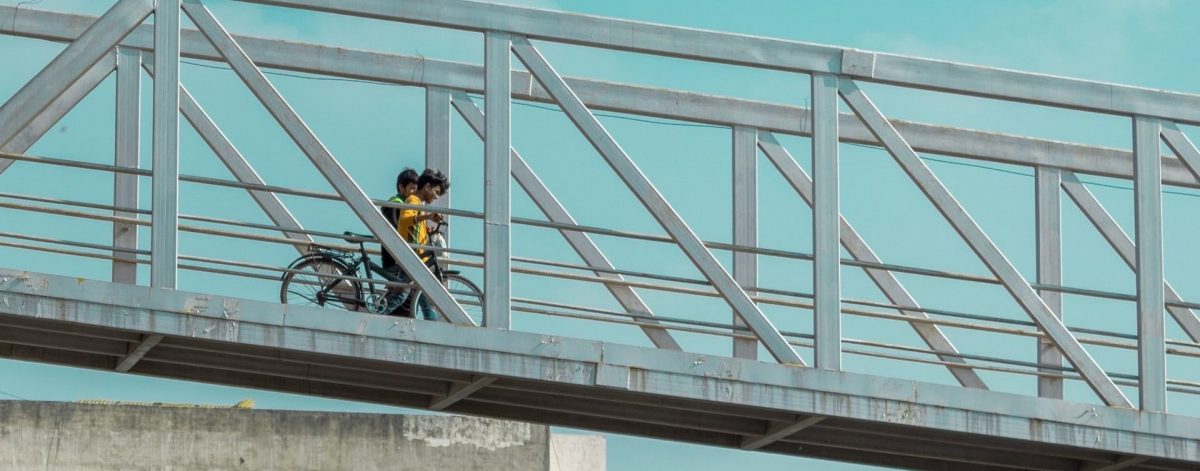
Our environment is filled with small pieces of infrastructure we don’t even notice. I guess we think our cities were always smart with bike renting and free wifi. We don’t have to imagine, then, what our day-to-day life would look like without something as simple as a sidewalk or walkway.
However, there are places where something as common as crossing a road is still risky for pedestrians and where traveling safely free from fears of an accident isn’t possible.
Getting “invisible” infrastructure like these to those places where they’re needed is also part of infrastructure companies’ work. These small projects don’t get much attention outside their community. Even so, they have a direct impact on people’s quality of life.
Life alongside Route 5 South
In recent years, I’ve worked on several projects geared at improving pedestrian connectivity on the Route 5 South highway in Chile. This highway is the main artery running through the country from north to south, and it’s part of the Pan American Highway. That project aims to link the entire continent from Alaska to Patagonia, but it is not complete to date.
Construction on this highway has transformed life for many communities over the last few years. Every day, trucks run to the ports of San Antonio and Valparaiso with goods destined for export — primarily fruits, wines, and salmon — or to Santiago and the north. We also find peculiar roadside stands on both sides of the road with fruits, sweets, or handicrafts that vary depending on the region and the season.
However, the highway has split many villages in two, generating external costs for those communities. As a result, neighbors must cross to the east or west side of Route 5 to get to the nearest school, office, or grocery store. It’s not uncommon to see pedestrians crossing the highway’s lanes either running or cycling.
To facilitate the neighborhoods’ mobility and make them safer, I’ve participated in several projects through Ferrovial to improve pedestrian connectivity. The first one I was involved in was part of the Ruta del Maule Concession in 2017, about 400 kilometers from Santiago. There, they built 14 bus stops, two pedestrian walkways that cross the highway, and two pedestrian bridges along the 200 kilometers of this project.
Hand-in-hand with the community
Carrying out these projects may seem simple, but they present several highly specific challenges. First, a great deal of effort is required at the organizational and coordination levels, as the dispersion of work requires traveling many kilometers each day. Our supervisors, topographers, and workers must get to each worksite and know precisely what is needed there. Miguel Bintaned, David Hernández, Diego Pinto, Elias Urrutia, Mauricio Aguayo, and Alfonso Barrero prove this.
Moreover, it’s common for communities to manage assets like drinking water or irrigation channels collectively in rural sectors. Thus, each time we run into these networks (which there are no as-built drawings for, of course), we have to find the right person who can manage it case by case.
All of this means that we have to look at our work differently and – why deny it? – we had to adapt as a team to this type of work. It has also allowed us to get to know the unique qualities of the people we’re building these infrastructures for even better. After all, that’s who we’re working for, in the end.
Engineering at the service of the community
While these footpaths aren’t an “engineering challenge,” they also receive little attention in the stages of the project. We have to review, fit, and adapt each structure and sidewalk, and we work with the same level of detail and commitment as if we were running the Heathrow expansion or other large projects.
“These projects are great not because of their size or magnitude, but because they directly serve their communities.”
I think that these works are great not because of their size or magnitude but because they directly serve their communities. We’re currently working on another project to improve pedestrian connectivity for the Ruta del Maipo Concession with pedestrian walkways in Teno and Quilapán, as well as improving accesses, bike lanes, and 32 new pedestrian circuits.
So we’re pleased to know that we are delivering infrastructure that improves people’s quality of life, offering solutions where they’re needed. That’s what our work is all about.





There are no comments yet